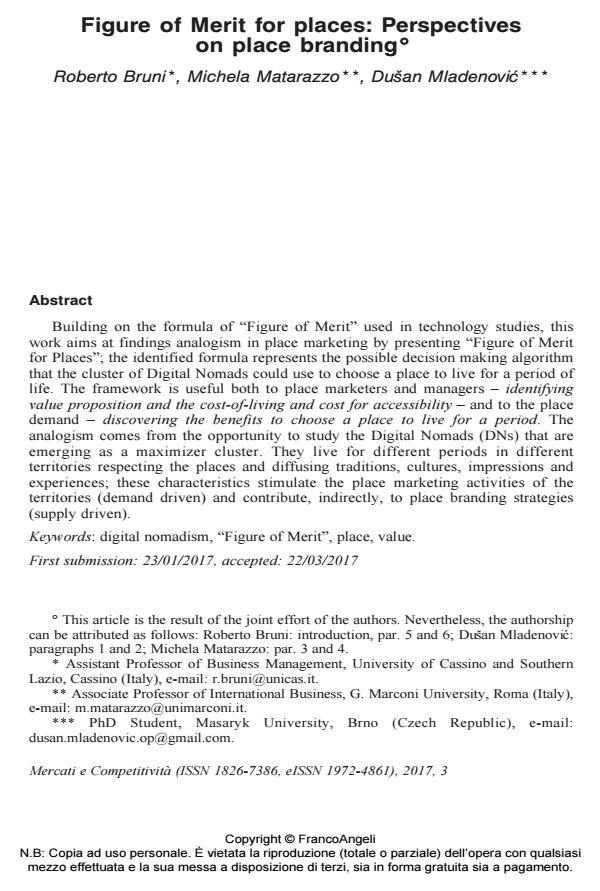Figure of Merit for places: Perspectives on place branding
Journal title MERCATI & COMPETITIVITÀ
Author/s Roberto Bruni, Michela Matarazzo, Dus?an Mladenovic´
Publishing Year 2017 Issue 2017/3
Language English Pages 16 P. 61-76 File size 71 KB
DOI 10.3280/MC2017-003005
DOI is like a bar code for intellectual property: to have more infomation
click here
Below, you can see the article first page
If you want to buy this article in PDF format, you can do it, following the instructions to buy download credits

FrancoAngeli is member of Publishers International Linking Association, Inc (PILA), a not-for-profit association which run the CrossRef service enabling links to and from online scholarly content.
Building on the formula of "Figure of Merit" used in technology studies, this work aims at findings analogism in place marketing by presenting "Figure of Merit for Places"; the identified formula represents the possible decision making algorithm that the cluster of Digital Nomads could use to choose a place to live for a period of life. The framework is useful both to place marketers and managers - identifying value proposition and the cost-of-living and cost for accessibility - and to the place demand - discovering the benefits to choose a place to live for a period. The analogism comes from the opportunity to study the Digital Nomads (DNs) that are emerging as a maximizer cluster. They live for different periods in different territories respecting the places and diffusing traditions, cultures, impressions and e xperiences; these characteristics stimulate the place marketing activities of the territories (demand driven) and contribute, indirectly, to place branding strategies (supply driven).
Keywords: Digital nomadism, "Figure of Merit", place, value.
- GEOPANDERING Stanley D. Brunn, Thomas L. Bell, in Geographical Review /2023 pp.433
DOI: 10.1080/00167428.2021.2012782
Roberto Bruni, Michela Matarazzo, Dus?an Mladenovic´ , Figure of Merit for places: Perspectives on place branding in "MERCATI & COMPETITIVITÀ" 3/2017, pp 61-76, DOI: 10.3280/MC2017-003005